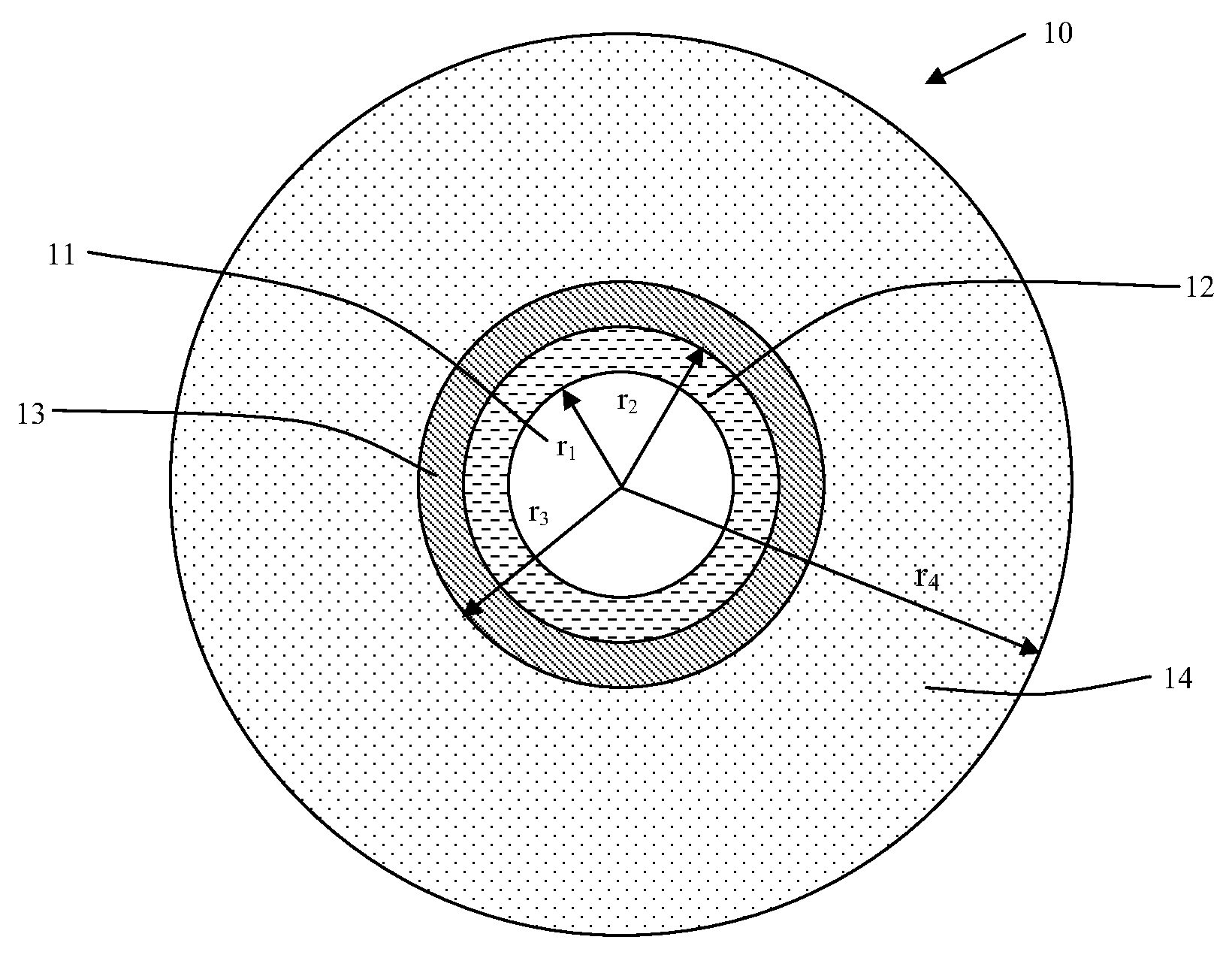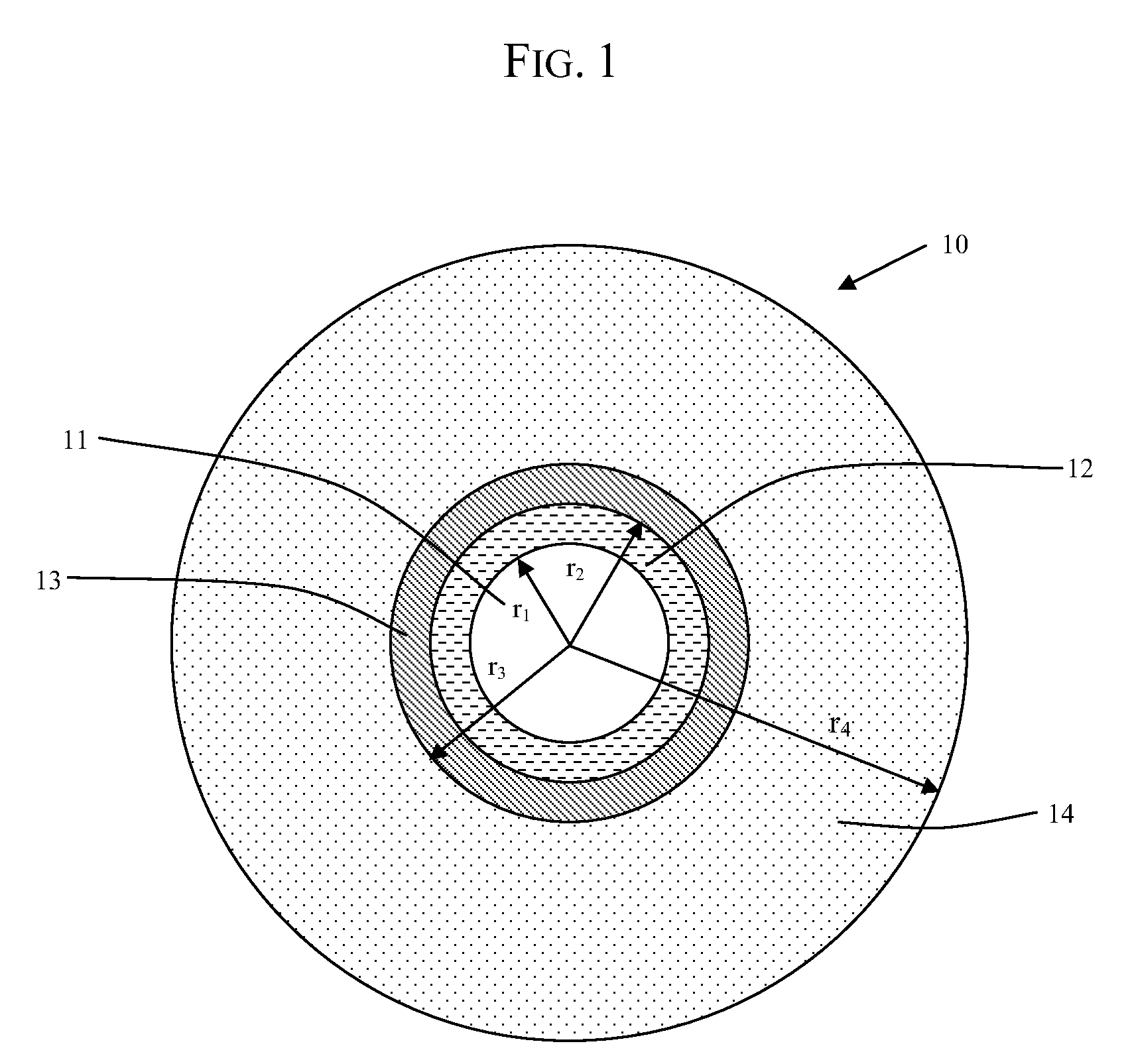Single-Mode Optical Fiber Having Reduced Bending Losses
a single-mode optical fiber and bending loss technology, applied in the field of optical fiber transmission, can solve the problems of incompatible fiber commercially with some transmission systems, bending losses that are small in actual, and high cost of implementation, and achieve the effect of improving bending losses and sufficient attenuation of lp11 mod
- Summary
- Abstract
- Description
- Claims
- Application Information
AI Technical Summary
Benefits of technology
Problems solved by technology
Method used
Image
Examples
Embodiment Construction
[0037]As depicted in FIG. 1, the optical fiber (10) of the invention has a central core (11), an intermediate cladding (12), and a depressed cladding (13). For purposes herein and without limiting the scope of the invention, depressed cladding means a radial portion of the fiber (10) having a refractive index less than the refractive index of the external optical cladding (14). Typically, the central core (11), the intermediate cladding (12), and the depressed cladding (13) are obtained by chemical vapor deposition in a silica tube. The external optical cladding (14) includes the silica tube and the overcladding on the tube. In typical embodiments, the overcladding is generally natural or doped silica, but can also be obtained by any other deposition technique (e.g., vapor axial deposition (“VAD”) or outside vapor deposition (“OVD”)).
[0038]FIG. 2 illustrates a refractive index profile for the optical fiber (10) of FIG. 1. The profile of FIG. 2 is a set profile (i.e., representative ...
PUM
 Login to View More
Login to View More Abstract
Description
Claims
Application Information
 Login to View More
Login to View More - R&D
- Intellectual Property
- Life Sciences
- Materials
- Tech Scout
- Unparalleled Data Quality
- Higher Quality Content
- 60% Fewer Hallucinations
Browse by: Latest US Patents, China's latest patents, Technical Efficacy Thesaurus, Application Domain, Technology Topic, Popular Technical Reports.
© 2025 PatSnap. All rights reserved.Legal|Privacy policy|Modern Slavery Act Transparency Statement|Sitemap|About US| Contact US: help@patsnap.com



